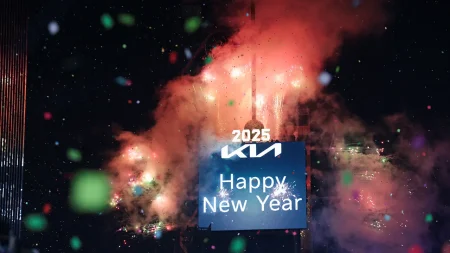Meeting of Minds: Biden and Modi Chart New Path for U.S.-India Relations
Historic Washington Summit Strengthens Strategic Partnership Amid Global Challenges
In a significant diplomatic engagement that underscored the evolving strategic partnership between the world’s oldest and largest democracies, U.S. President Joe Biden welcomed Indian Prime Minister Narendra Modi to Washington for high-level discussions that spanned critical bilateral and global issues. The meetings, which took place against the backdrop of shifting geopolitical dynamics and emerging security challenges, resulted in several landmark agreements and a renewed commitment to deepen cooperation across multiple domains.
The summit, described by officials from both nations as “transformative,” marked a pivotal moment in U.S.-India relations at a time when both countries are navigating complex international waters. From technological innovation to defense collaboration, climate action to educational exchanges, the wide-ranging discussions reflected the comprehensive nature of the relationship that has steadily evolved from what was once described as “estranged democracies” to “natural partners” in the 21st century.
Defense and Security: Forging Stronger Military Ties
One of the most substantial outcomes of the summit was the advancement of defense and security cooperation, with both leaders emphasizing the importance of a free and open Indo-Pacific region. President Biden and Prime Minister Modi announced a groundbreaking agreement that will allow for co-production of advanced military equipment, including combat vehicles and sophisticated aerial systems. This represents a significant departure from traditional buyer-seller dynamics that have characterized past defense relationships between the two nations.
“This partnership is not just about transactions but about co-creation and shared strategic objectives,” said Biden during the joint press conference at the White House Rose Garden. The agreement includes provisions for technology transfer and joint research initiatives, addressing India’s long-standing concerns about access to critical defense technologies. For Washington, the enhanced cooperation aligns with its broader strategy of strengthening alliances to address China’s growing influence in the region. Modi emphasized that the defense partnership “reflects mutual trust and shared commitment to regional stability,” while carefully avoiding direct references to Beijing – maintaining India’s traditional diplomatic balancing act.
Technology and Innovation: Charting a Digital Future
The digital economy and technological innovation emerged as central pillars of the bilateral relationship during the summit. Both leaders unveiled an ambitious initiative called the “U.S.-India Technology Partnership for the Future,” which includes joint investments exceeding $15 billion in critical and emerging technologies including semiconductor manufacturing, artificial intelligence, quantum computing, and biotechnology.
The partnership aims to create resilient supply chains while fostering innovation ecosystems in both countries. Particularly noteworthy was the announcement of a new semiconductor fabrication facility to be established in Gujarat with American technical expertise and partial funding – addressing critical vulnerabilities in global supply chains exposed during the pandemic. “Together, we are building technological bridges that will power the next generation of economic growth,” Modi stated, highlighting the complementary strengths of Silicon Valley’s innovation capacity and India’s robust talent pool of engineers and scientists. The initiative also included provisions for protecting intellectual property rights and ensuring data privacy standards – addressing key concerns from American businesses operating in India. Education institutions from both countries will participate in exchange programs aimed at developing specialized workforce capabilities in cutting-edge technological fields.
Climate Action and Energy Transition: Collaborative Pathways to Sustainability
Environmental cooperation featured prominently in the discussions, with both leaders reaffirming their commitment to accelerating the global transition to clean energy. The summit produced a comprehensive climate and clean energy framework that includes American investment of $8 billion to support India’s ambitious renewable energy targets. The framework outlines collaborative efforts to develop and deploy technologies for green hydrogen production, energy storage solutions, and modular nuclear reactors.
“Climate change presents both an urgent challenge and a tremendous opportunity for economic transformation,” Biden noted, praising India’s commitment to achieving 500 gigawatts of non-fossil fuel electricity capacity by 2030. Modi emphasized that “environmental stewardship is deeply rooted in Indian cultural traditions” while acknowledging the developmental challenges facing his nation. The framework includes innovative financing mechanisms to mobilize private capital for climate initiatives and establishes joint research programs focused on climate-resilient agriculture techniques. Notably, the leaders announced the creation of a U.S.-India Climate and Clean Energy Accelerator to facilitate technology transfer and capacity building, addressing a key demand from developing nations in global climate negotiations. Environmental experts have cautiously welcomed the announcements while noting that implementation timelines and specific emissions reduction pathways require further clarification.
Economic Partnership: Expanding Trade and Investment Horizons
Economic ties received substantial attention during the summit, with both leaders emphasizing the untapped potential for growth in bilateral trade and investment. While falling short of announcements regarding a comprehensive free trade agreement, the summit produced several targeted initiatives to address trade barriers and expand economic engagement. These included a “Strategic Trade Dialogue” mechanism to resolve outstanding issues related to market access, intellectual property protection, and regulatory harmonization.
“Our economic relationship has enormous room to grow, and we are committed to creating the conditions for businesses and entrepreneurs to thrive in both countries,” Biden stated. The leaders unveiled a new infrastructure financing partnership aimed at mobilizing public and private capital for connectivity projects across the Indo-Pacific region – widely seen as an alternative to China’s Belt and Road Initiative, though neither leader framed it explicitly in those terms. Modi highlighted recent economic reforms in India, including simplification of business regulations and production-linked incentive schemes, designed to attract greater foreign investment. “We welcome American companies to participate in India’s growth story,” he said, specifically mentioning opportunities in manufacturing, healthcare, and digital services. The discussions also addressed ongoing negotiations regarding Indian inclusion in key global supply chain initiatives and American concerns about India’s data localization requirements – indicating that while significant progress was made, several complex economic issues remain works in progress.
Global Governance and Multilateral Cooperation: Shared Perspectives on a Changing World Order
The summit demonstrated growing alignment between Washington and New Delhi on several international challenges, though nuanced differences remained visible on certain geopolitical questions. Both leaders expressed concern about the humanitarian impact of the Russia-Ukraine conflict, with Biden appreciating India’s provision of humanitarian assistance to Ukraine while tactfully avoiding direct criticism of India’s continued energy purchases from Russia. Modi emphasized the importance of dialogue and diplomacy in resolving the conflict, reflecting India’s traditional non-aligned stance while acknowledging the importance of territorial integrity.
The joint statement released after the talks highlighted shared commitments to reforming international institutions, including the United Nations Security Council, to better reflect contemporary global realities – a long-standing Indian objective that has received increasingly explicit American support. “The international order must evolve to address 21st-century challenges,” Biden noted, endorsing India’s permanent membership in a reformed Security Council. The leaders announced coordinated initiatives to strengthen global health security, including expanded vaccine production capacity and pandemic surveillance systems – building on lessons learned during the COVID-19 crisis. They also pledged deeper cooperation on countering terrorism and violent extremism, with specific focus on disrupting terrorist financing networks and preventing radicalization. Notably, the summit produced new frameworks for consultation on humanitarian assistance and disaster relief operations globally, leveraging the capabilities of both nations to respond to natural disasters and humanitarian emergencies throughout the Indo-Pacific region and beyond.
This landmark summit, while building on years of steadily improving relations, represents what many analysts describe as an inflection point in the U.S.-India partnership. As both nations navigate a complex international landscape characterized by strategic competition, technological disruption, climate challenges, and economic uncertainties, their ability to translate summit declarations into concrete action will determine whether this moment truly marks the beginning of what Biden called “among the most consequential partnerships of our time.”










